Nestled in the heart of Georgia’s lush countryside, my trip to Stone Mountain was a captivating adventure that brought together natural beauty, history, and outdoor recreation. Stone Mountain, with its massive granite dome and rich historical significance, offered a perfect getaway just outside the bustling city of Atlanta. Here, I will share the highlights of my memorable journey to Stone Mountain, Georgia.
Stone Mountain is located in Stone Mountain Park, which is in the eastern part of the Atlanta metropolitan area in the U.S. state of Georgia. Here’s how to get to Stone Mountain from Atlanta:
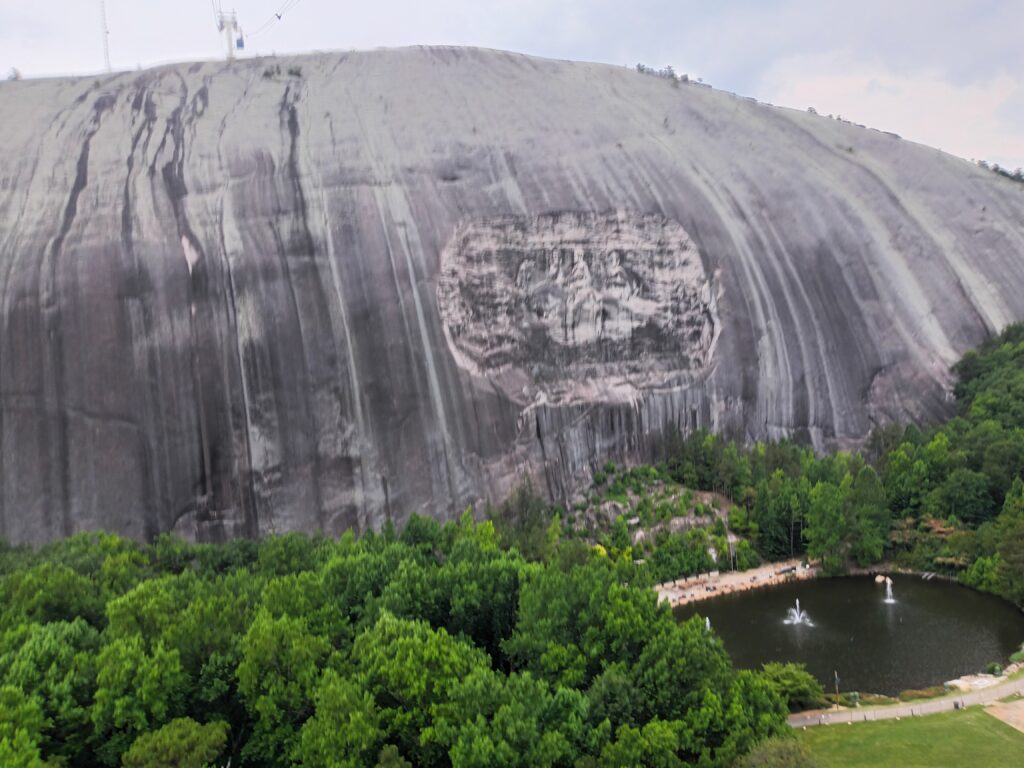
Dare!
“Experience the awe-inspiring majesty of Stone Mountain – where adventure and history unite!”
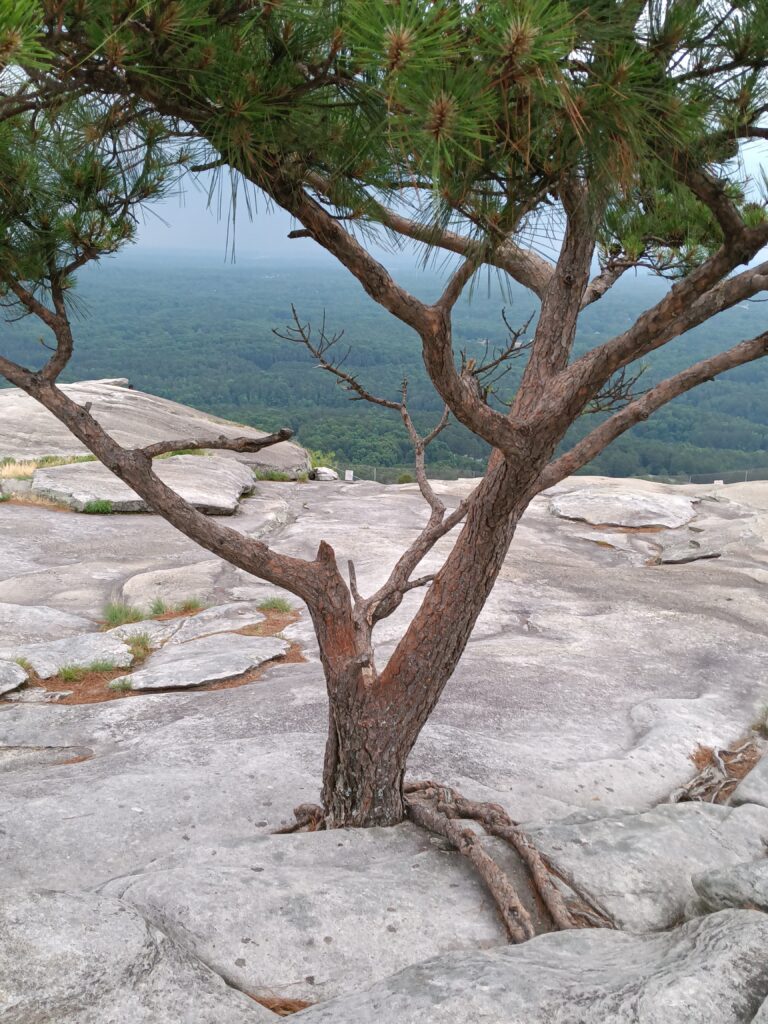
By Car: From Downtown Atlanta: Start by heading east on I-20 East. Take Exit 39B: This exit will lead you to the entrance of Stone Mountain Park. Follow Signs: Once you exit the highway, follow the signs directing you to Stone Mountain Park. The park entrance is clearly marked. The drive from downtown Atlanta to Stone Mountain typically takes around 30-45 minutes, depending on traffic.
Using Public Transportation: If you prefer not to drive, you can also reach Stone Mountain using public transportation. MARTA (Metropolitan Atlanta Rapid Transit Authority) provides bus service to the park from various locations in Atlanta.
Take MARTA: Use MARTA’s Blue Line train and get off at the Indian Creek MARTA station. Transfer to a Bus: From the Indian Creek station, you can transfer to MARTA Bus 121. This bus route goes directly to Stone Mountain Park. The MARTA trip may take around 1 to 1.5 hours, depending on your starting location and the time of day.
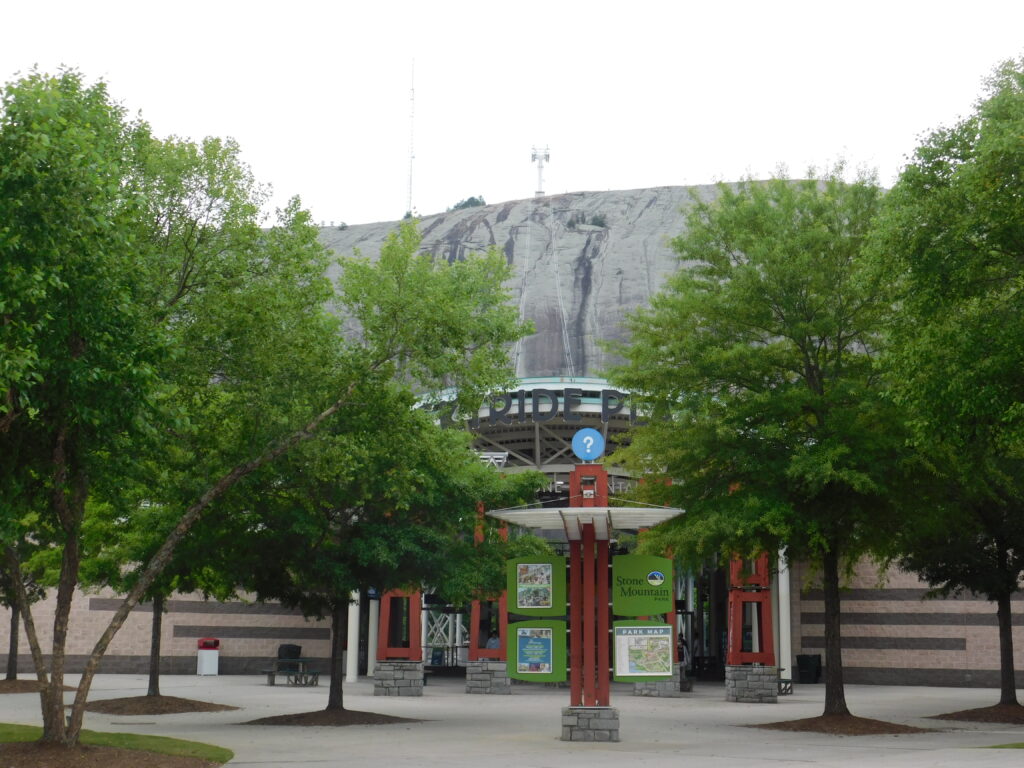
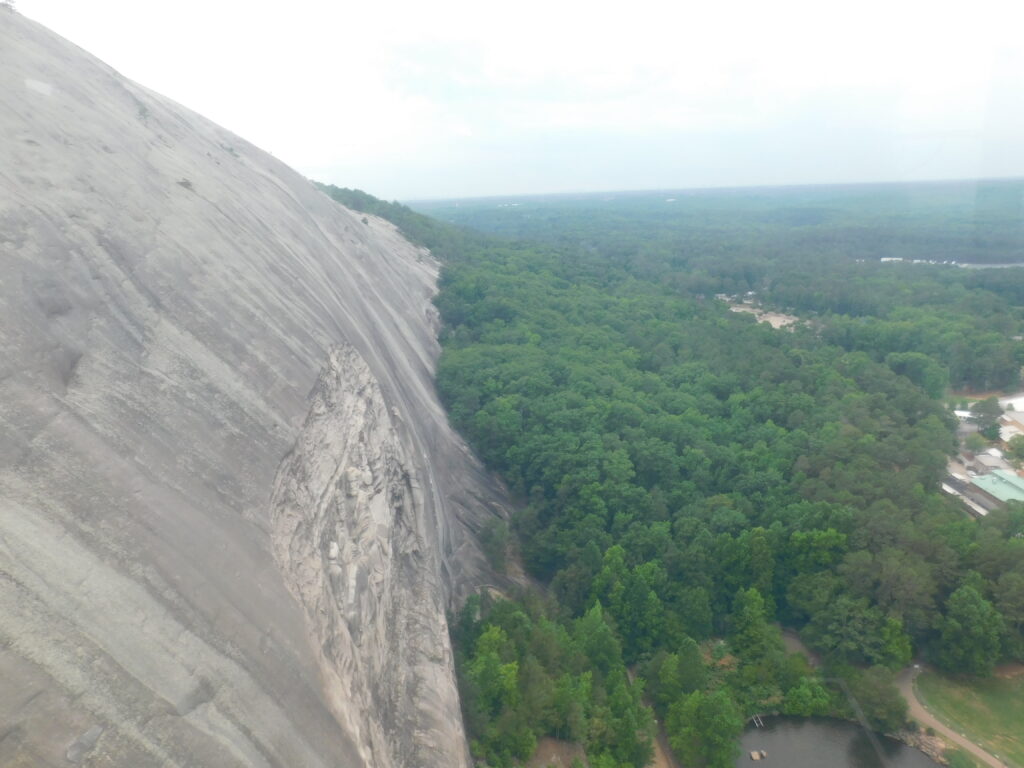
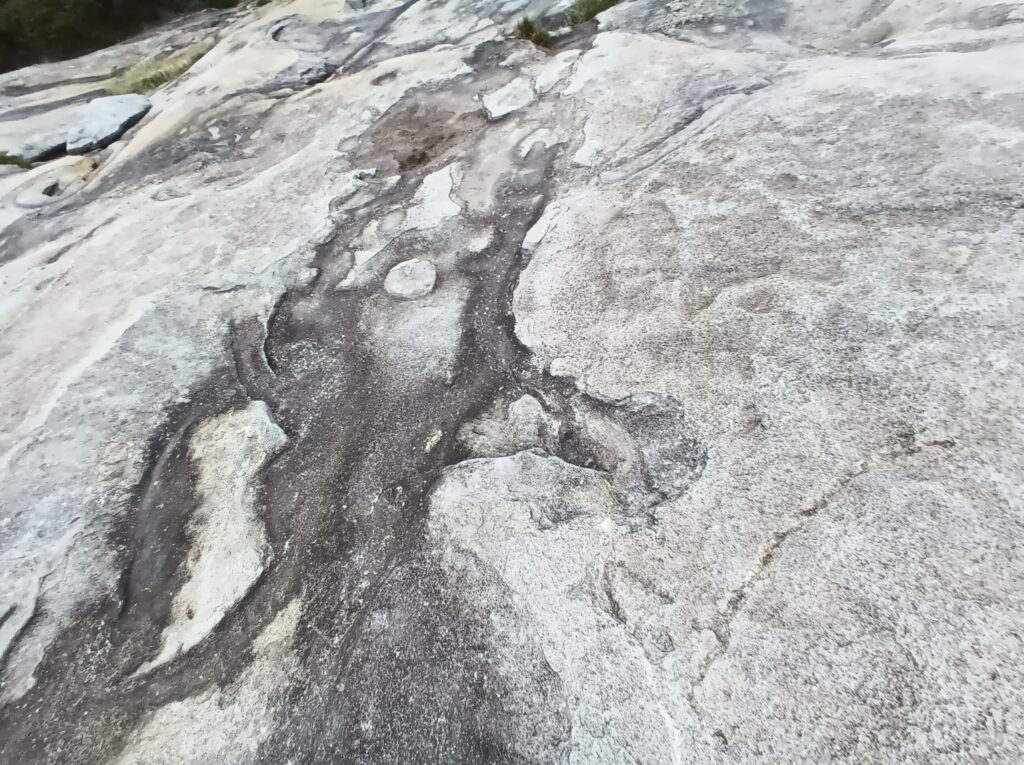
Stone Mountain’s geological marvel is truly a sight to behold, capturing the essence of nature’s grandeur. This massive granite dome, sprawling across 583 acres, stands as a geological giant, rising to an awe-inspiring height of 825 feet above the gentle undulations of the surrounding landscape. It is not merely a rock formation; it is a testament to the sheer power and artistry of geological forces that have shaped our planet over millions of years. Stone Mountain is a prominent geological feature that has been present in the region for millions of years. It is a natural landmark, and Indigenous peoples were likely aware of its existence long before the arrival of European settlers. The area around Stone Mountain has a rich history, including the presence of Native American tribes who inhabited the region for thousands of years. European settlers began to explore and settle in the area in the early 19th century, and they certainly would have encountered Stone Mountain. In terms of documentation, the earliest known written reference to Stone Mountain comes from a 1773 map by English surveyor William De Brahm, which labeled it as “Rock Mt.” However, it wasn’t until the mid-19th century that more detailed descriptions and documentation of Stone Mountain were recorded as settlers and geologists explored the area.
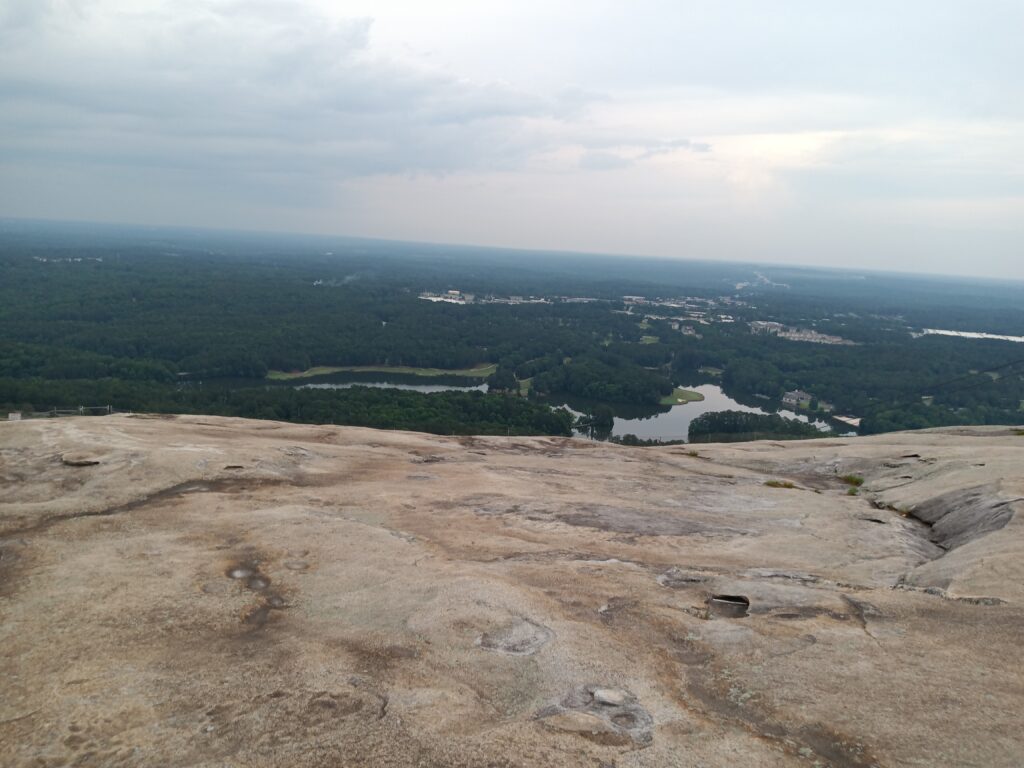

My journey to the summit of this colossal rock formation was nothing short of a profound experience. The hike, though challenging at times, was a rewarding endeavor that allowed me to intimately connect with the earth beneath my feet. Each step brought me closer to the zenith, and with every passing moment, the anticipation grew. As I ascended, the transition of the environment around me was palpable. Lush forests enveloped me, providing a rich tapestry of flora and fauna. The symphony of nature’s sounds filled the air, with the chirping of birds and the rustling of leaves underfoot creating a harmonious backdrop to my ascent. Approaching the summit, the tranquil lakes that lay beneath the mountain’s shadow revealed themselves. These shimmering bodies of water, framed by the rugged beauty of the granite, served as oases of serenity amidst the rugged terrain. They mirrored the vibrant blue of the sky above, creating a mesmerizing contrast to the stony behemoth that dominated the landscape. And then, as I reached the pinnacle, the world unfolded before me in breathtaking fashion. The panoramic views from the summit were nothing short of a visual feast.
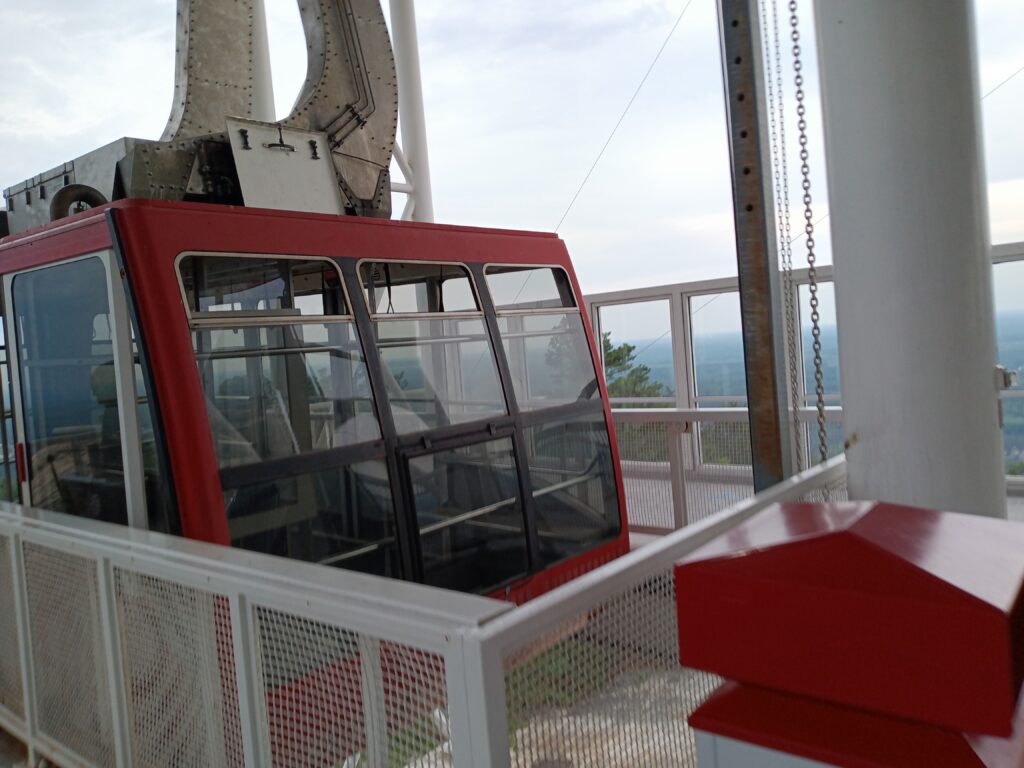
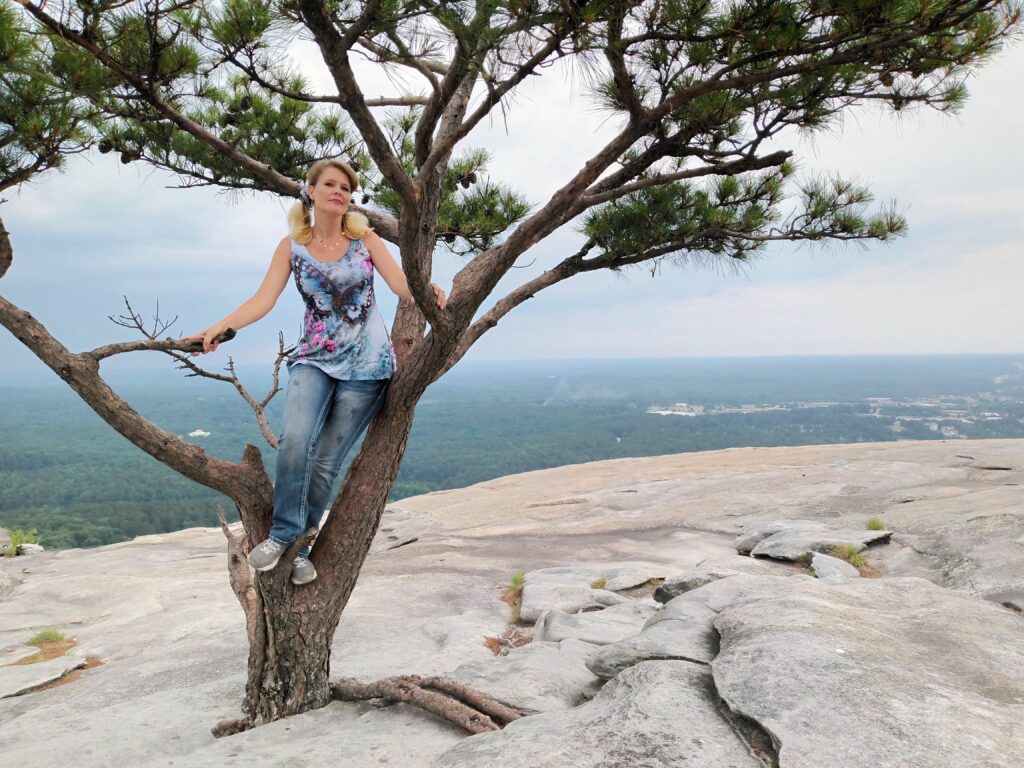

The sprawling Atlanta skyline, a testament to human achievement, stood on the horizon, juxtaposed against the timeless beauty of nature. It was a captivating blend of urban and natural landscapes, a vivid reminder of the delicate balance that exists between the modern world and the ancient forces that have shaped it. From my vantage point, I could see the city’s bustling energy and the calm repose of the lakes below, all framed by the enduring presence of the granite monadnock. The vista stretched out endlessly, inviting contemplation and a profound sense of connection to the world around me. In that moment, as I stood atop Stone Mountain, I was reminded of the transformative power of nature and the deep-rooted connection between humanity and the Earth. It was an experience that left an indelible mark on my soul, a reminder that amidst the hustle and bustle of modern life, there are places like Stone Mountain that offer solace, perspective, and the chance to witness the wonders of our natural world in all their splendor.
Stone Mountain Park offers a plethora of outdoor activities to suit all interests. Hiking enthusiasts can explore a network of well-maintained trails, each offering a unique perspective of the mountain. For a leisurely experience, I took a relaxing paddleboat ride on Stone Mountain Lake, admiring the serene waters and the reflection of the granite monadnock.
One of the highlights of my trip was riding the Skyride aerial tramway, which provided a bird’s-eye view of the entire park. As I ascended, the sense of anticipation and excitement grew. The vista from the tramcar was truly awe-inspiring and allowed me to appreciate the scale and beauty of Stone Mountain from a different angle. I noticed a large carving on the face of the rock. This is famous Confederate Memorial Carving, featuring the likenesses of Confederate leaders Robert E. Lee, Stonewall Jackson, and Jefferson Davis, is carved into the mountain’s north face. The carving of the Confederate Memorial on Stone Mountain, Georgia, was a complex project that began in 1916 and spanned several decades. Initiated by the United Daughters of the Confederacy (UDC), the carving aimed to depict three prominent Confederate leaders: General Robert E. Lee, General Thomas J. “Stonewall” Jackson, and President of the Confederate States of America, Jefferson Davis. Sculptors like Gutzon Borglum, Augustus Lukeman, Walter Hancock, and Roy Faulkner played roles in its creation. However, due to financial difficulties, interruptions, and changing sculptors, the project experienced long delays. The carving was officially completed in 1972, and it has since remained a subject of controversy and debate due to its association with the Confederacy and its leaders, sparking discussions about its historical significance and calls for contextualization.
This massive sculpture serves as a reminder of the complex history of the American Civil War.
As the day gave way to night, I eagerly awaited the Stone Mountain Laser Show, a spectacular multimedia presentation that lights up the night sky. The show combines laser lights, fireworks, music, and dramatic projections onto the mountain’s granite face. The patriotic themes and the grandeur of the show left me in awe, capping off a day filled with wonder and adventure.
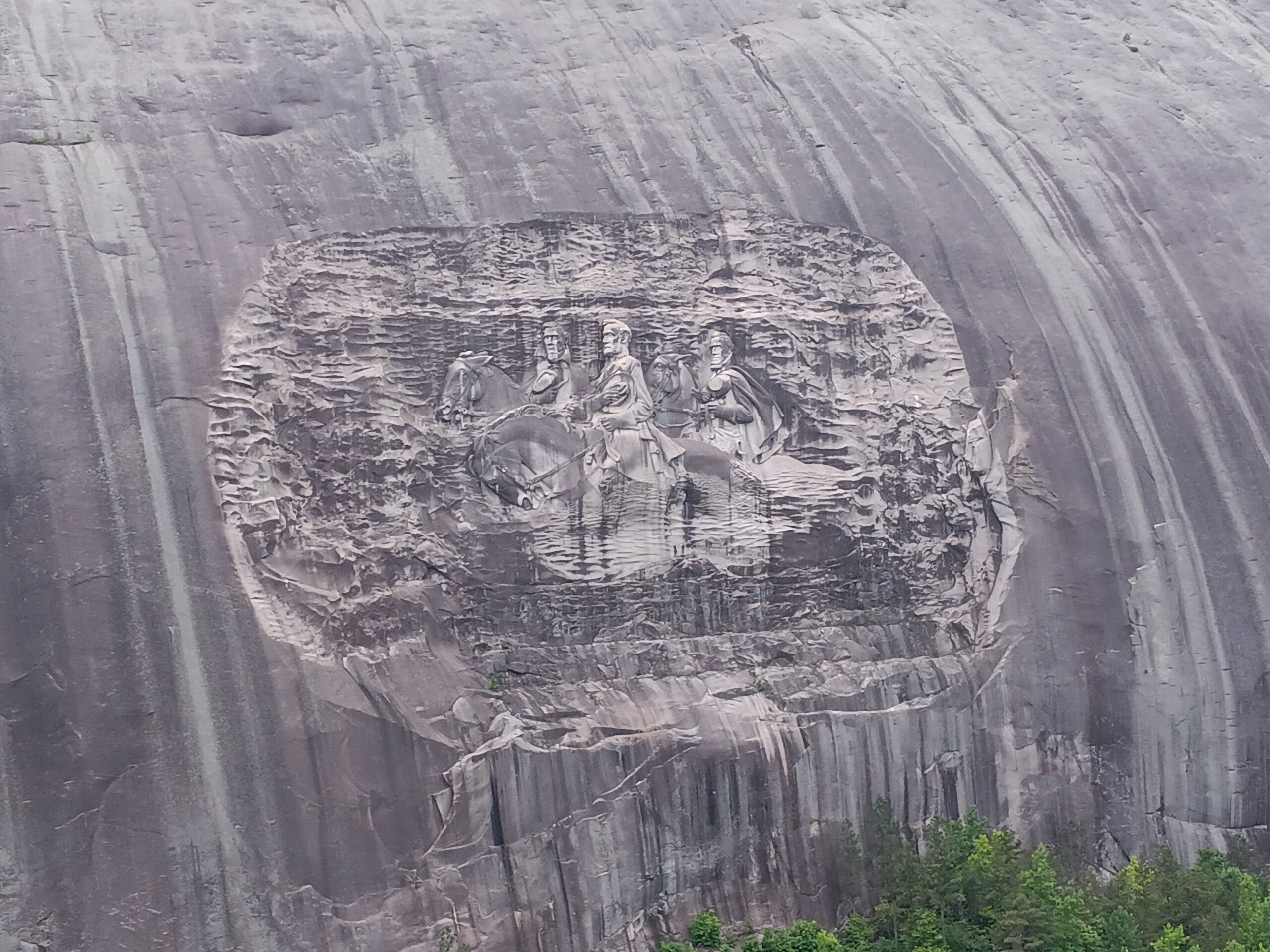
My trip to Stone Mountain, Georgia, was an unforgettable experience that seamlessly blended natural beauty, outdoor activities, and historical exploration. It’s a destination that offers something for everyone, whether you’re a nature enthusiast, history buff, or simply seeking a tranquil escape from the city. Stone Mountain continues to stand as a symbol of Georgia’s rich heritage and the captivating wonders of the natural world.






